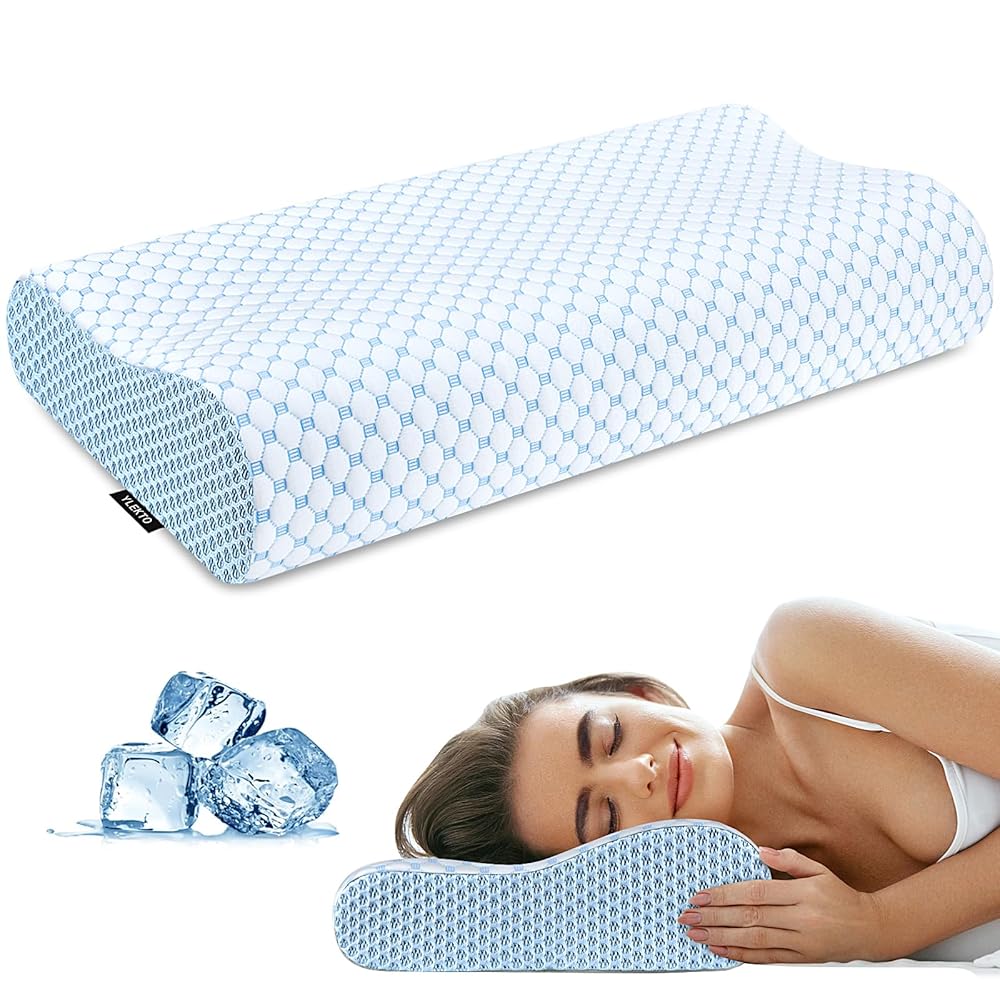
When it comes to getting a good night’s sleep, few things are as essential as the right pillow. Among the many options available, memory foam pillows have surged in popularity for their unique ability to conform to the shape of your head and neck, providing personalized comfort and support. If you’re considering switching to a memory foam pillow, this comprehensive guide will walk you through everything you need to know.
What Are Memory Foam Pillows?
Memory foam, also known as viscoelastic foam, is a material originally developed by NASA to improve seat cushioning and crash protection for pilots and passengers. Over time, this innovative material found its way into the bedding industry, revolutionizing how we sleep. Memory foam pillows are crafted from polyurethane and additional chemicals that enhance their viscosity and density, allowing them to respond to heat and pressure by molding to your unique shape.
Benefits of Memory Foam Pillows
1. Customized Support
Memory foam pillows contour to the natural curve of your head and neck, offering unparalleled support. This helps maintain proper spinal alignment, reducing the risk of stiffness and pain.
2. Pressure Relief
The material evenly distributes weight and alleviates pressure points, making it ideal for individuals suffering from neck pain, shoulder pain, or headaches.
3. Hypoallergenic Properties
Memory foam is resistant to dust mites and other allergens, making it a great choice for allergy sufferers.
4. Durability
High-quality memory foam pillows can last for years without losing their shape, providing long-term comfort and value for money.
5. Motion Isolation
Unlike traditional pillows, memory foam minimizes movement transfer, which can be particularly beneficial if you share a bed with a restless sleeper.
Types of Memory Foam Pillows
Memory foam pillows come in various types, each catering to different sleep preferences and needs:
1. Traditional Memory Foam Pillow
This is a single piece of foam designed to contour to your head and neck. It’s ideal for back and side sleepers who need consistent support.
2. Shredded Memory Foam Pillow
Filled with shredded memory foam pieces, these pillows offer a more customizable experience. You can adjust the filling to achieve your desired loft and firmness.
3. Gel-Infused Memory Foam Pillow
Gel-infused memory foam pillows are designed to regulate temperature, keeping you cool throughout the night. They’re perfect for hot sleepers.
4. Contour Memory Foam Pillow
Shaped with a curve to support the neck and shoulders, these pillows are a favorite among side and back sleepers who need targeted pressure relief.
5. Wedge Memory Foam Pillow
Triangular in shape, wedge pillows are often used for medical purposes, such as alleviating acid reflux, snoring, or back pain.
How to Choose the Best Memory Foam Pillow
Selecting the right memory foam pillow can make all the difference in your sleep quality. Here are some factors to consider:
1. Sleeping Position
- Back Sleepers: Opt for a medium-loft pillow that supports the natural curve of your neck.
- Side Sleepers: Look for a higher-loft pillow to fill the gap between your head and shoulders.
- Stomach Sleepers: Choose a soft, low-loft pillow to prevent strain on your neck.
2. Firmness
Memory foam pillows are available in varying firmness levels. Choose a firmness that aligns with your comfort preferences and sleeping position.
3. Cooling Features
If you tend to sleep hot, consider a gel-infused memory foam pillow or one with breathable covers.
4. Pillow Size
Memory foam pillows come in standard, queen, and king sizes. Select a size that complements your mattress and personal preference.
5. Certifications
Look for pillows certified by organizations like CertiPUR-US, which ensure the foam is free from harmful chemicals and safe for use.
Caring for Your Memory Foam Pillow
To extend the life of your memory foam pillow, follow these care tips:
- Use a Pillow Cover: A removable and washable cover can protect your pillow from stains and allergens.
- Spot Clean Only: Avoid soaking memory foam in water. Instead, use a damp cloth and mild detergent to clean stains.
- Air It Out: Occasionally air out your pillow to remove odors and keep it fresh.
- Avoid Direct Heat: Keep your pillow away from direct sunlight or high temperatures, as heat can damage the foam.
Common Myths About Memory Foam Pillows
1. “Memory Foam is Too Hot to Sleep On.”
While traditional memory foam retains heat, modern advancements like gel infusions and ventilated designs effectively address this issue.
2. “Memory Foam Pillows Are Only for People with Neck Pain.”
While they do help alleviate neck pain, memory foam pillows are suitable for anyone looking for better support and comfort.
3. “They Have a Strong Chemical Smell.”
Off-gassing, or the release of a chemical odor, is temporary and typically dissipates within a few days of use.
Top Memory Foam Pillow Brands to Consider
- Tempur-Pedic: Renowned for their high-quality memory foam and innovative designs.
- Coop Home Goods: Known for their adjustable shredded memory foam pillows.
- Weekender: Offers budget-friendly options without compromising quality.
- Snuggle-Pedic: Specializes in customizable and eco-friendly memory foam pillows.
- Contour Living: Focuses on ergonomic designs for targeted support.
Conclusion
Memory foam pillows are a game-changer for anyone seeking improved sleep quality and comfort. By understanding the benefits, types, and factors to consider when choosing one, you can find the perfect memory foam pillow to suit your needs. Remember, investing in the right pillow is an investment in your health and well-being. Sweet dreams await!
